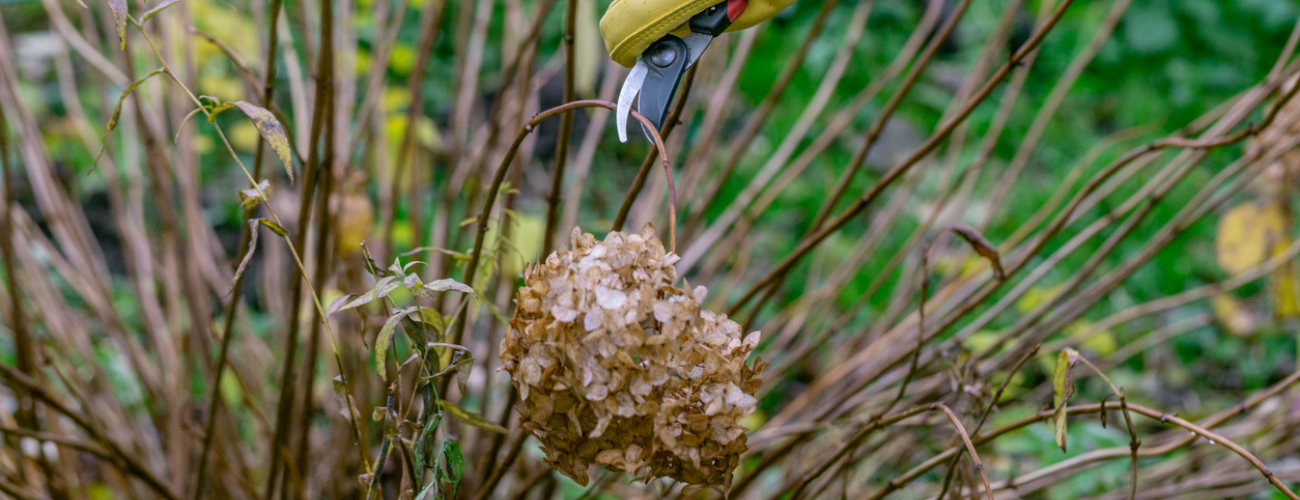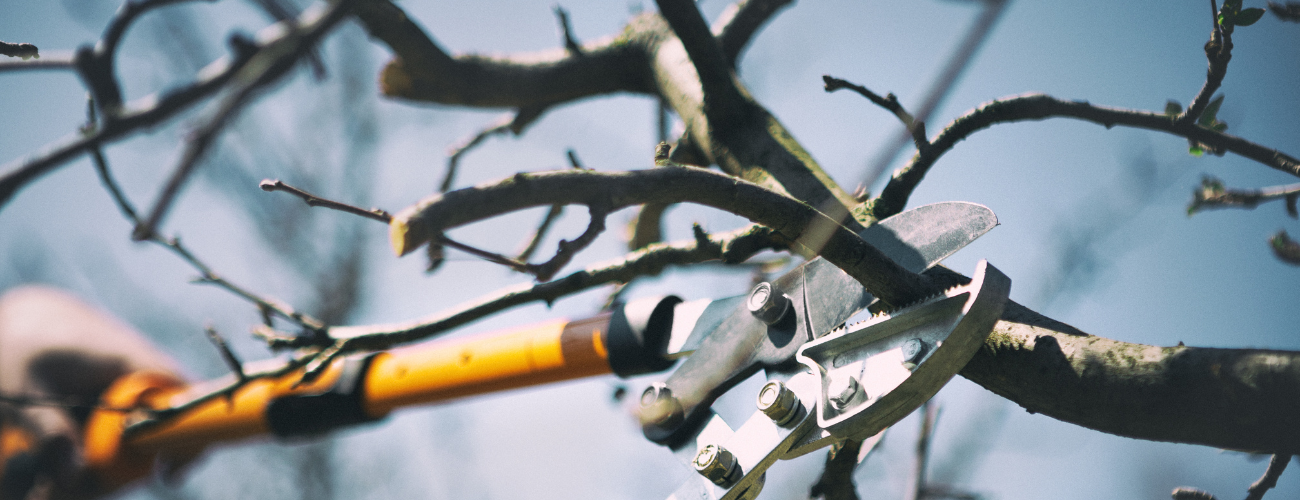Why do we prune in winter?
The main purpose of winter pruning is to remove dead or diseased stems and for free standing fruit trees it is also to ensure productivity. Winter is not necessarily the best time for controlling the size of plants as winter pruning will promote vigorous growth the following season.
Winter is the ideal time to prune deciduous trees and bushes because you can see the skeleton of the plant and have better access to the branches without leaves blocking your view.
How do we prune?
Use appropriate sharp tools such as secateurs for thinner stems (thickness of your little finger, loppers for thicker stems (up to thumb thickness) and pruning saws for anything larger.
Always begin with the three D’s, by removing Dead or Diseased and any Damaged stems which are crossing and rubbing against each other. Cut back to 1cm above an outward facing bud to encourage an open shape or if buds are opposite each other make a clean horizontal cut. Cut back weaker stems harder to encourage vigorous replacement growth. The general rule is to try not to cut out more than a third of the plant in any one year but it is worth looking up individual plants to check their requirements first.
Fruit trees
Pruning fruit trees like apples and pears (but not stone fruits like plums, peaches, cherries or ornamental cherries) will help encourage a good crop by channelling energy into the remaining buds.
Roses
Rambling roses are routinely pruned in late summer and climbing roses between December and February. Renovation of old established roses is carried out at any time between late autumn and late winter. Other roses are routinely pruned around February or March before new growth appears.
The main shoots of hybrid Tea roses can be cut back to 20-25cm and Floribundas to 30-38cm. Occasionally, older stems can be cut back to near ground level to stimulate new growth. Aim for an open bush that allows free flow of air and light.
Other shrubs and trees
If you grow cornus or salix for its colourful stems then it should be cut back to 15-30cm every winter before the new growth starts because older growth loses its bright colour. Hydrangeas can also be pruned now; for mopheads cut back to the first pair of healthy buds below last year’s flowers and for established plants cut out one or two of the oldest stems at the base. For paniculatas hard prune each stem to the lowest pair of healthy buds to produce larger flowers on stronger branches. Group 3 clematis which only flower on new growth in mid-late summer should be pruned down to 10cm. For group 2 clematis which have large flowers from May to June, prune back stems to the first pair of healthy buds from the tip.
Herbaceous perennials and grasses
Late winter is also the perfect time to begin tidying up all the herbaceous perennials and grasses that were left for winter structure and to clear space ready for bulbs and spring flowering plants to start their show. Be careful not to cut the tips of new season growth of perennials when tidying up.
What to avoid
Avoid pruning in very wet conditions; apart from being unpleasant for you the moisture can spread disease. Stone fruits are prone to silver leaf disease which can infect trees through pruning cuts in autumn and winter and should only be pruned in mid-summer on an overcast day. Do not winter prune evergreens or spring flowering shrubs (wait until after they have flowered). The RHS has a useful list of plants that bleed sap heavily if pruned at the wrong time: https://www.rhs.org.uk/pruning/bleeding-from-cuts

By our resident horticultural expert











